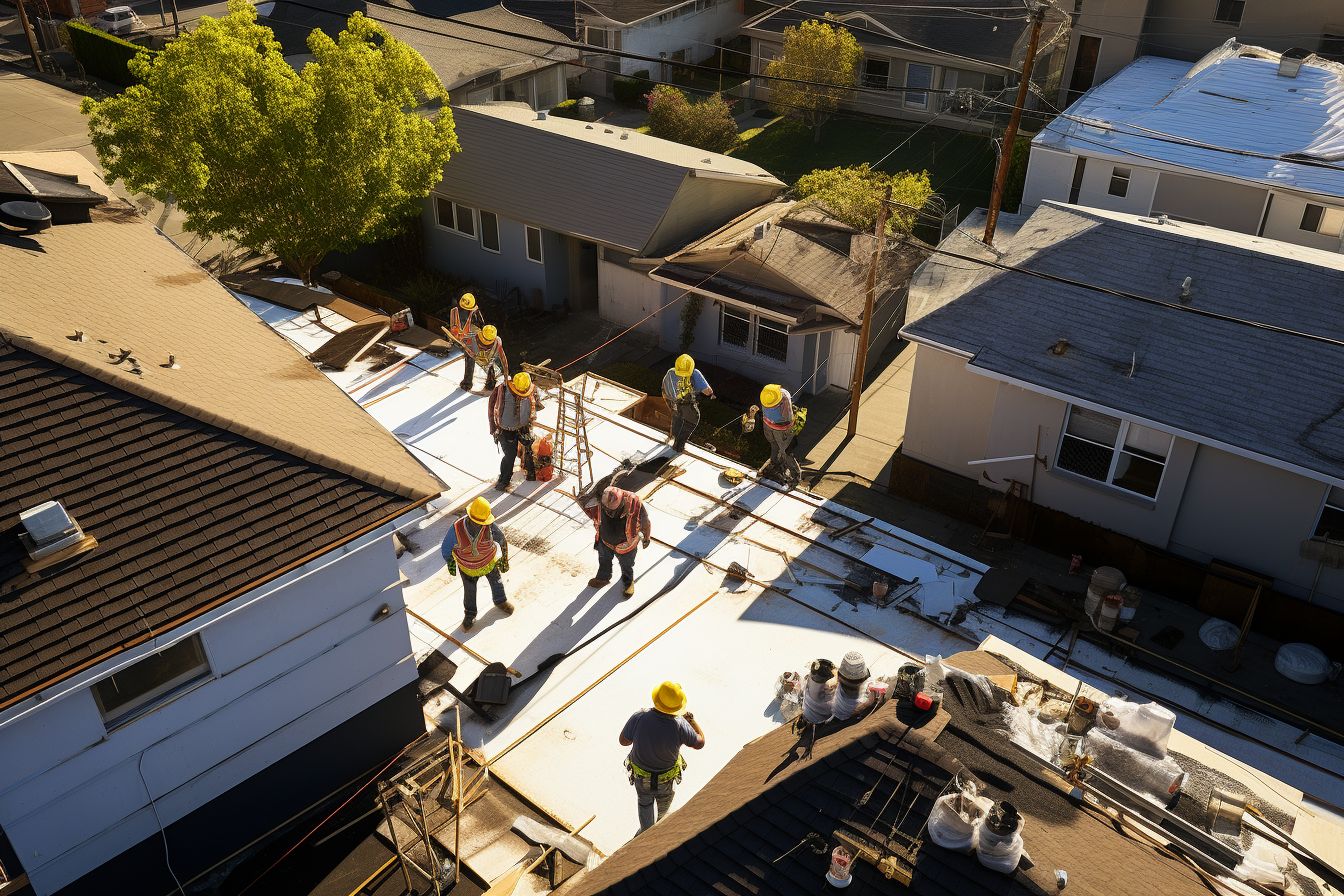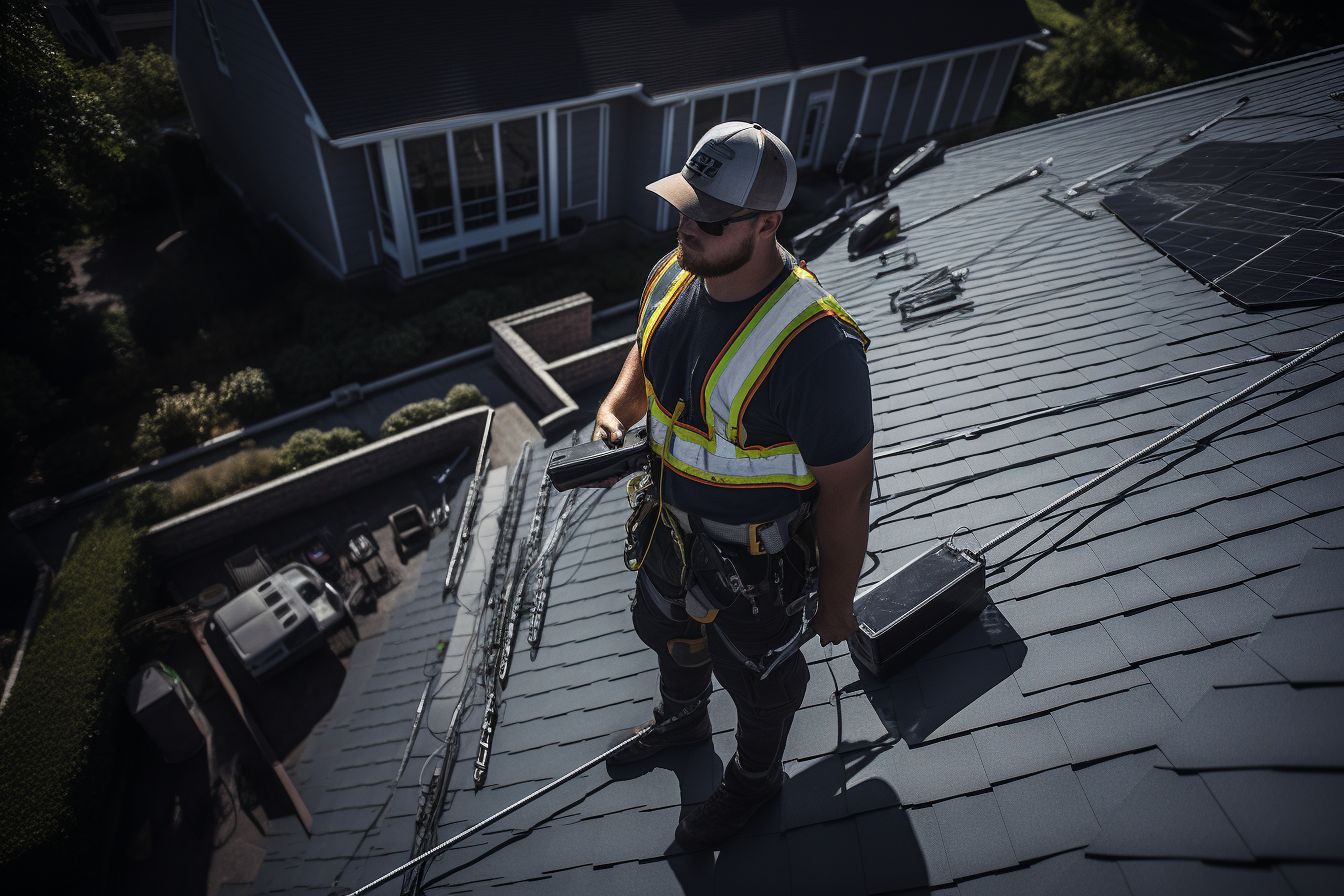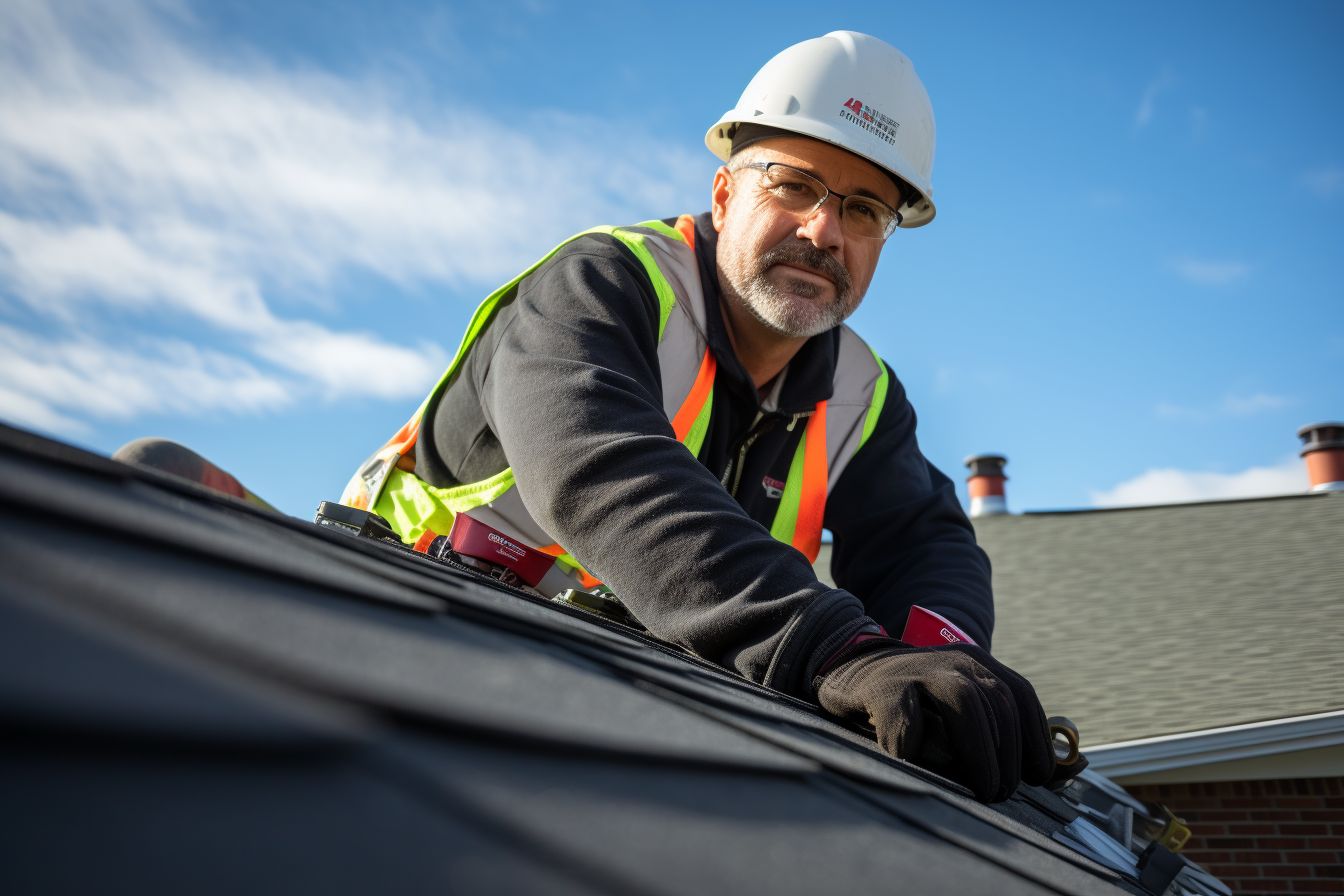Is your roof looking worse for wear, perhaps making you consider a replacement? Many homeowners don’t realise that even the best quality roofing materials can deteriorate over time.
This article will guide you in planning effectively for this crucial home update, ensuring less stress and better results. Ready to give your home new protection and a fresh look? Let’s dive in!
Key Takeaways
- Signs that it’s time to replace your roof include weathered, cracked, or missing shingles, curling edges, and moss growth.
- Planning a roof replacement includes choosing the right contractor, selecting appropriate materials, preparing your yard and home, removing old roofing materials, installing new ones, and performing a final inspection.
- Taking care of your new roof involves regular inspections for damage or wear, keeping gutters clean and free from clogs, trimming overhanging tree branches, addressing leaks promptly, and scheduling professional maintenance.
Signs It’s Time for a Roof Replacement
Weathered, cracked, and missing shingles often give the first alert that a roof replacement is due. As skin wrinkles with age, asphalt shingles curl at their edges when old and worn out.
This is usually a tell-tale sign of an impending replacement. Rain, sun, snow — all these significantly reduce the durability of your roof over time.
Another indicator that it’s time for a roof replacement can be revealed through your home improvement records. Most roofs have a lifespan of roughly 20 to 25 years. If you find from past receipts that your existing asphalt shingle roofs have crossed their longevity threshold, it’s wise to plan for a new one soon.
You may also observe moss growth or dark streaks on your roofing material, indicating persistent moisture damage, which could rapidly deteriorate its overall health.
While regular inspections might help maintain them better, severe cases could call for immediate replacements instead of repair work.
In short, if you see any or all these signs on your current roof—cracks, curls or wear out due to climatic conditions; ageing beyond usual lifespan; consistent moisture damage—it’s likely high time for a roof replacement rather than patch-up solutions.
Steps to Plan a Roof Replacement
 Choose the right contractor, select appropriate materials, prepare your yard and home, remove old roofing materials, install new ones, and perform a final inspection.
Choose the right contractor, select appropriate materials, prepare your yard and home, remove old roofing materials, install new ones, and perform a final inspection.
Choose the right contractor.

A successful roof replacement greatly depends on the proficiency of your roofing contractor. With various options available, selecting a qualified and trustworthy expert is crucial to address your needs effectively.
Researching potential contractors’ experience, expertise, and reliability is essential in making this decision.
An informed homeowner knows that asking pertinent questions helps avoid costly mistakes during a roof replacement process. Evaluating experiences shared by previous clients could provide valuable insights into a contractor’s work ethic and product delivery quality.
Hiring an experienced roofer guarantees professionalism, from removing the old roof to executing post-job cleanup efficiently.
Select the appropriate materials.

Choosing the right roofing material for your needs is critical in roof replacement. The right choice can hinge on many factors, including your home exterior style, budget, and local climate.
Numerous roofing materials are available, from asphalt shingles to metal sheets, and each has pros and cons. For example, metal roofs are popular for their durability but may not suit every home style or budget.
Depending on individual preferences and financial comfort levels, vinyl or slate could be more fitting options. Do thorough research or work closely with professionals like Jackson Contracting, who assist homeowners in evaluating roofing options that will compliment both their homes and pockets favourably.
Prepare your yard and home for the replacement.
Prepare your yard for the roof replacement by clearing out any patio furniture and other objects that could obstruct the work. Before the replacement begins, inspect your property to identify any potential issues that need to be addressed.
Remove wall decorations and relocate your vehicle to ensure a smooth process. Remember to consider the safety of children and pets during this time to minimise disruptions. Properly preparing your home for a roof replacement can help facilitate the process and reduce potential complications.
Remove the old roofing materials.
Removing the old roofing materials is essential in planning a roof replacement. The old shingles are typically removed before installing the new roofing materials. It is recommended to remove the old materials for a more thorough replacement.
Although it may be possible to lay the new roofing material over the old shingles, this method is not preferred. Once the new roof is installed, it’s important to clean up the job site and remove all the old materials and debris from your property.
Install the new roofing materials.
The next step in planning a roof replacement is to install the new roofing materials. This involves carefully placing and securing the chosen materials onto your roof. The type of materials used will depend on your budget, personal preference, and the climate in your area.
Following manufacturer guidelines and utilising proper installation techniques is important to ensure a long-lasting and efficient roof. Once the installation is complete, a final inspection should ensure everything is in place and properly sealed.
Properly installing the new roofing materials is crucial for the success of your roof replacement project. Make sure you select high-quality materials suitable for your specific needs and preferences.
Perform a final inspection.
Performing a final inspection is a crucial step in the roof replacement process. Once all the work is completed, it’s important to assess the roof’s condition visually. This inspection helps determine if the replacement was successful and if there are any potential issues or complications that need attention.
By conducting a thorough final inspection, you can ensure your new roof is in good condition and ready to protect your home for years.
Tips for Taking Care of a New Roof
Regular roof maintenance is key to prolonging the lifespan of your new roof. Here are some tips to help you take care of it:
– Inspect your roof regularly for any signs of damage or wear.
– Remove any debris, such as leaves and branches, that may accumulate on the roof.
– Keep gutters clean and free from clogs to ensure proper drainage.
– Trim overhanging tree branches that could damage the roof during strong winds or storms.
– Check for leaks or water damage inside your home and address them promptly.
– Schedule regular professional inspections and maintenance to catch potential issues early on.
Remember, taking care of your new roof will extend its life and save you money in the long run.
Conclusion

Planning a roof replacement may seem daunting, but following the right steps and making careful decisions can ensure a successful project. From choosing the right contractor to selecting the appropriate materials, each step plays a crucial role in the outcome of your new roof.
By taking care of your new roof and addressing any maintenance needs, you can prolong its lifespan and protect your home for years. Don’t underestimate the importance of proper planning when replacing your roof!
FAQs
1. How long does it take to plan a roof replacement?
The time it takes to plan a roof replacement can vary depending on factors such as the roof’s size, the project’s complexity, and the availability of materials. It is best to consult with a roofing contractor for an accurate timeline.
2. What factors should I consider when planning a roof replacement?
When planning a roof replacement, consider budget, material options, weather conditions, and hiring a reputable roofing contractor.
3. Do I need permits for a roof replacement?
Permit requirements for a roof replacement vary by location. It is important to check with your local building department or consult a roofing professional to determine if permits are required in your area.
4. How much does it cost to plan a roof replacement?
The cost of planning a roof replacement depends on various factors, including the size and complexity of the project, the choice of materials, and any necessary repairs or modifications. It’s best to obtain quotes from multiple contractors for an accurate estimate.
5. Can I finance my roof replacement project?
Yes, there are financing options available for roof replacements. Some homeowners may use personal savings or home equity loans, while others may qualify for specialised financing programs offered by roofing companies or financial institutions.

